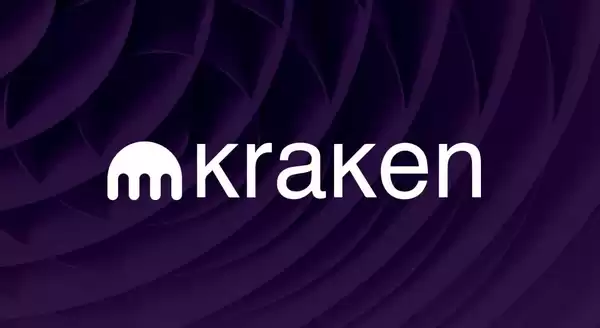-
 bitcoin
bitcoin $122090.672462 USD
1.59% -
 ethereum
ethereum $4493.758974 USD
0.56% -
 xrp
xrp $3.033145 USD
0.65% -
 tether
tether $1.000629 USD
0.00% -
 bnb
bnb $1169.854250 USD
7.07% -
 solana
solana $230.954786 USD
-0.19% -
 usd-coin
usd-coin $0.999785 USD
0.00% -
 dogecoin
dogecoin $0.256108 USD
-1.12% -
 tron
tron $0.342333 USD
-0.12% -
 cardano
cardano $0.859632 USD
-0.10% -
 hyperliquid
hyperliquid $48.932146 USD
-2.25% -
 chainlink
chainlink $22.345466 USD
-1.29% -
 ethena-usde
ethena-usde $1.000217 USD
-0.03% -
 avalanche
avalanche $31.203456 USD
1.93% -
 sui
sui $3.579145 USD
1.05%
How to make money from Kraken contracts
Futures contracts on Kraken offer opportunities for profit through skillful trading, enabling investors to leverage price movements, but prudent risk management remains paramount.
Nov 13, 2024 at 07:42 pm

In the realm of cryptocurrency trading, futures contracts have emerged as a potent tool for discerning investors to amplify their profit potential and hedge against market risks. Kraken, a prominent cryptocurrency exchange renowned for its security and reliability, offers a comprehensive platform for traders to engage in futures trading. This guide will delve into the intricacies of making money from Kraken contracts, providing step-by-step instructions, strategies, and insights to equip traders with the knowledge and skills required for success.
Step 1: Understanding Futures ContractsFutures contracts are derivative financial instruments that obligate the buyer to purchase (in case of a long position) or the seller (in case of a short position) to deliver a specified quantity of an underlying asset at a predetermined price on a future date. In cryptocurrency futures trading, traders are speculating on the future value of the underlying cryptocurrency, seeking to profit from price fluctuations.
Step 2: Choosing the Right CryptocurrencySelecting the underlying cryptocurrency for your futures contract is crucial. Factors to consider include market trends, liquidity, and volatility. Popular cryptocurrencies for futures trading include Bitcoin (BTC), Ethereum (ETH), Litecoin (LTC), and Ripple (XRP).
Step 3: Funding Your Kraken AccountBefore initiating futures trades, traders must fund their Kraken account with sufficient capital. Kraken supports various funding methods, including bank transfers, credit/debit cards, and cryptocurrency deposits.
Step 4: Opening a Futures PositionTo open a futures position on Kraken, traders can navigate to the "Futures" tab, select the desired cryptocurrency, and enter details such as the contract size, leverage (optional), and order type. Leverage allows traders to amplify their potential profits, but it also magnifies risks.
Step 5: Monitoring and Managing RiskFutures trading involves inherent risks due to price volatility. Constant vigilance and robust risk management strategies are essential. Traders should monitor market conditions, set stop-loss orders to mitigate potential losses, and consider hedging their positions to minimize downside risks.
Step 6: Closing a Futures PositionTo close a futures position on Kraken, traders can enter an opposing order to their initial position. For instance, if a trader has an open long position, they can close it by placing a short order of the same size.
Step 7: Withdraw Your ProfitsOnce a futures trade is closed, traders can withdraw their profits from Kraken to their external wallet or fiat currency account. Kraken provides a user-friendly interface for seamless withdrawal processing.
Additional Strategies for ProfitabilityIn addition to the fundamental steps outlined above, there are several strategies that traders can employ to enhance their profitability in Kraken futures trading:
1. Trend Trading: This strategy involves identifying and trading in line with the prevailing market trend. Traders can use technical analysis tools to identify trends and determine entry and exit points.
2. Scalping: This high-frequency trading technique aims to capture small profits from short-term price fluctuations. Scalpers typically use tight stop-loss orders and focus on highly liquid markets.
3. Hedging: Hedging is a risk management strategy that involves taking an opposite position in a different market or asset to offset the risk exposure of another position.
4. Arbitrage: Arbitrage is a strategy that exploits price differences between different markets or exchanges. Traders buy an asset on one exchange and simultaneously sell it on another at a higher price, capturing the spread.
Disclaimer:info@kdj.com
The information provided is not trading advice. kdj.com does not assume any responsibility for any investments made based on the information provided in this article. Cryptocurrencies are highly volatile and it is highly recommended that you invest with caution after thorough research!
If you believe that the content used on this website infringes your copyright, please contact us immediately (info@kdj.com) and we will delete it promptly.
- BlockDAG, DOGE, HYPE Sponsorship: Crypto Trends Shaping 2025
- 2025-10-01 00:25:13
- Deutsche Börse and Circle: A StableCoin Adoption Powerhouse in Europe
- 2025-10-01 00:25:13
- BlockDAG's Presale Buzz: Is It the Crypto to Watch in October 2025?
- 2025-10-01 00:30:13
- Bitcoin, Crypto, and IQ: When Genius Meets Digital Gold?
- 2025-10-01 00:30:13
- Stablecoins, American Innovation, and Wallet Tokens: The Next Frontier
- 2025-10-01 00:35:12
- NBU, Coins, and Crypto in Ukraine: A New Yorker's Take
- 2025-10-01 00:45:14
Related knowledge

Practical parameter settings for a Bitcoin multi-timeframe moving average system
Sep 18,2025 at 10:54pm
Optimizing Timeframe Combinations for Bitcoin Trading1. Selecting appropriate timeframes is crucial when building a multi-timeframe moving average sys...

How can I filter out false breakouts in Dogecoin high-frequency trading?
Sep 22,2025 at 01:00am
Understanding False Breakouts in Dogecoin Trading1. A false breakout occurs when Dogecoin's price appears to move beyond a defined support or resistan...

Techniques for identifying tops and bottoms in the Bitcoin on-chain NVT model
Sep 20,2025 at 07:54pm
Understanding the NVT Model in Bitcoin Analysis1. The Network Value to Transactions (NVT) ratio is often described as the 'P/E ratio' of the cryptocur...

What does the surge in open interest in Bitcoincoin futures mean?
Sep 20,2025 at 11:18pm
Understanding the Surge in Dogecoin Futures Open Interest1. A surge in open interest within Dogecoin futures indicates a growing number of active cont...

How can I use the Ethereum USDT premium to gauge market sentiment?
Sep 18,2025 at 11:55pm
Understanding the Ethereum USDT Premium1. The Ethereum USDT premium refers to the price difference between USDT (Tether) traded on Ethereum-based plat...

What should I do if Ethereum staking yields decline?
Sep 20,2025 at 06:18am
Understanding the Causes Behind Declining Ethereum Staking Yields1. The Ethereum network transitioned to a proof-of-stake consensus mechanism with the...

Practical parameter settings for a Bitcoin multi-timeframe moving average system
Sep 18,2025 at 10:54pm
Optimizing Timeframe Combinations for Bitcoin Trading1. Selecting appropriate timeframes is crucial when building a multi-timeframe moving average sys...

How can I filter out false breakouts in Dogecoin high-frequency trading?
Sep 22,2025 at 01:00am
Understanding False Breakouts in Dogecoin Trading1. A false breakout occurs when Dogecoin's price appears to move beyond a defined support or resistan...

Techniques for identifying tops and bottoms in the Bitcoin on-chain NVT model
Sep 20,2025 at 07:54pm
Understanding the NVT Model in Bitcoin Analysis1. The Network Value to Transactions (NVT) ratio is often described as the 'P/E ratio' of the cryptocur...

What does the surge in open interest in Bitcoincoin futures mean?
Sep 20,2025 at 11:18pm
Understanding the Surge in Dogecoin Futures Open Interest1. A surge in open interest within Dogecoin futures indicates a growing number of active cont...

How can I use the Ethereum USDT premium to gauge market sentiment?
Sep 18,2025 at 11:55pm
Understanding the Ethereum USDT Premium1. The Ethereum USDT premium refers to the price difference between USDT (Tether) traded on Ethereum-based plat...

What should I do if Ethereum staking yields decline?
Sep 20,2025 at 06:18am
Understanding the Causes Behind Declining Ethereum Staking Yields1. The Ethereum network transitioned to a proof-of-stake consensus mechanism with the...
See all articles










































































